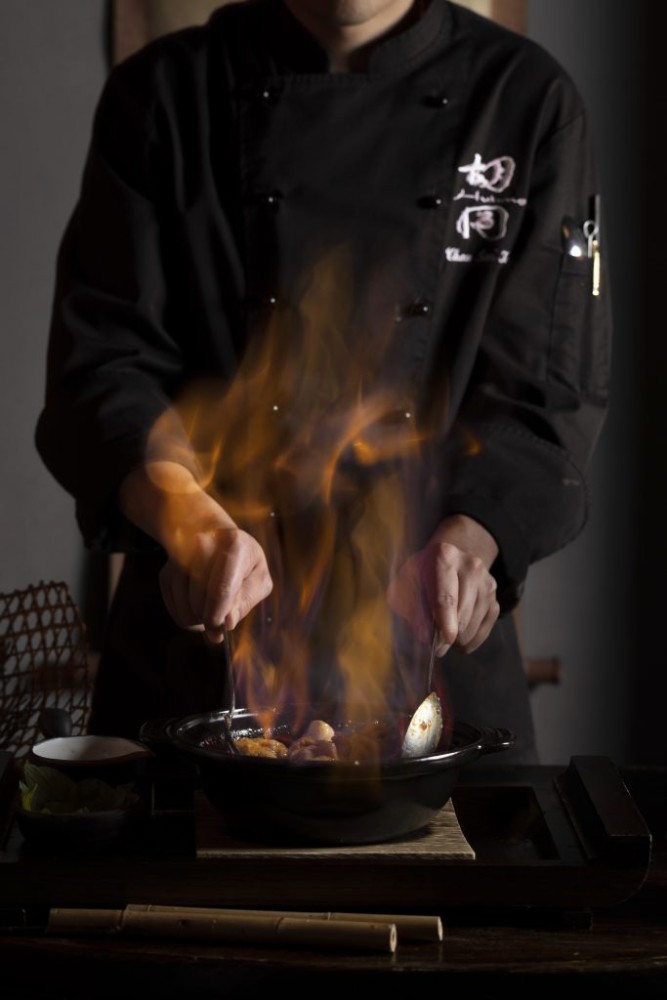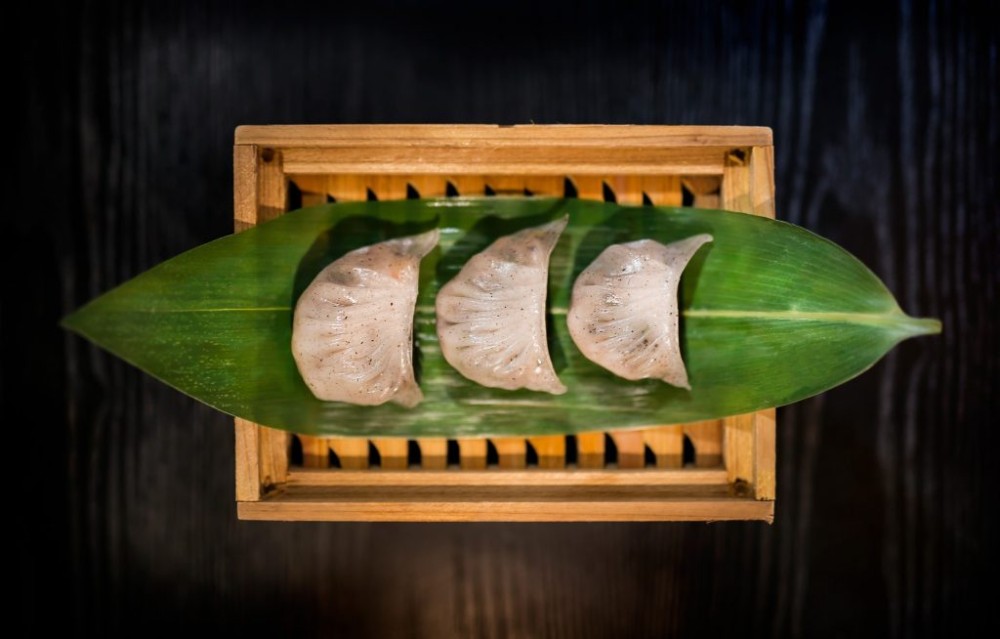3 traditional Chinese dishes with unique origin stories
Nov 01, 2021
Traditional Chinese foods do more than taste good and mark special occasions- some of them also have intriguing stories to tell
There are myths and intriguing origin stories surrounding traditional Chinese fare. Here are a few.
Beggar’s Chicken

The myth surrounding Beggar’s Chicken originates from Hangzhou thousands of years ago. A popular version goes that a beggar stole a chicken from the emperor and wrapped it in lotus leaves, packed clay around it, then put it in a mud hole before lighting a fire to cook the bird – the underground fire would not produce smoke and therefore not attract the imperial guards.
Some stories say the emperor stopped to eat with the beggar and loved the chicken so much, he put it on the imperial menu. Others say the beggar became rich making and selling this dish to locals.
Hutong head chef Cheung Yung-Keung’s version of the dish takes more than six hours to make. His recipe includes marinating the bird with soy sauce, rice wine, salt and Hutong’s secret Silk Road spices. After an hour, spring onions, ginger, diced chicken, lean pork, shrimp, ham, shiitake mushrooms and pickled kohlrabi are stir-fried, then cooled and stuffed inside the chicken. It’s then wrapped in two layers of lotus leaves and cooked in an oven.
“Traditionally, Beggar’s Chicken is baked using pond mud,” says the chef. “Nowadays, most restaurants substitute the mud for a flour dough. At Hutong, we use a terracotta clay that was used in ancient winemaking to seal and ferment centuries-old rice wine to make it more aromatic (traditionally from Zhejiang Province). It’s superior to regular soft pond mud because of its high density, which allows the chicken to be baked in a completely sealed environment. The aromas are perfectly preserved and the tenderness of the chicken is not lost.”
Buddha Jumps Over the Wall
The most common myth about how this traditional Chinese soup originated comes from the Qing dynasty. A scholar and his friends were travelling a long distance by foot and kept their food in a clay jar usually used for wine. When they wanted to eat, they heated the clay jar with the food inside over a fire.
They arrived in Fuzhou, the capital of Fujian Province, and started to cook the food. The delicious aromas spread to a nearby Buddhist monastery where monks were meditating. Being vegetarian, one of the monks jumped over the wall to try the food. A poet with the travellers said: “Even Buddha would jump the wall
to eat the delicious dish.”
This Fujian soup traditionally includes up to 30 ingredients and 12 condiments, some of which are quail eggs, sea cucumber, pork tendon, scallops, abalone, shark fin, bamboo shoots, ginseng, mushrooms, Jinjua ham cooked in yellow wine and bone broth.
Chef Li Chi-wai at Rosewood Hong Kong’s Chinese restaurant, The Legacy House, compares his version to the traditional one. “The traditional version uses a variety of bones, wine, ginger and red dates that are boiled in a Shaoxing wine container. The end product is delicious and has a long-lasting flavour. Our version at The Legacy House is inspired by this traditional method but we use premium Chinese seafood and bird’s nest, which adds an extra luxurious touch to produce the most flavourful soup,” says the chef.
“The end product is that the soup has various layers of flavours. Whilst we keep it traditional, you can also taste and smell the wonderful aroma and essence of the various types of Chinese seafood. Our version is also healthier.” It’s also worth noting that the modern versions do not include shark fin in Hong Kong.
“The traditional way of serving this soup is straight from the large pot,” Li says. “We serve the soup in individual mini pots because in Chinese cooking, the most important thing is to maintain the temperature of the dish so when our guests open up the pot, they can still feel that the soup is hot.”
Dumplings

Although there are many types of dumplings in many different cultures, one legend dates back to the Han dynasty when Chinese medicine practitioner Zhang Zhongjing made them to help people warm up during the cold winters. He took mutton, herbs and chillies and wrapped them in dough before steaming them.
One Hong Kong restaurant has modernised traditional har gau with a creative twist. Chef Lueng Kwok-wa, group executive dim sum chef at Dim Sum Library, has a signature black truffle har gau and limited-edition flavours of dill, oregano, aged-mandarin peel and yuzu koshō.
“The difference between these and the traditional ones lies with the premium ingredients that we use,” says the chef. “Years ago we created the popular black truffle har gau and our seasonal Rosé Champagne har gau for Valentine’s Day. Inspired by these unique infusions, we explored a variety of different ingredients that would pair perfectly with juicy and plump shrimp. Our new Har Gau Series was born featuring aromatic and botanical ingredients that are all infused into the delicate outer layer of the dim sum and that you will never have tried before.”





























